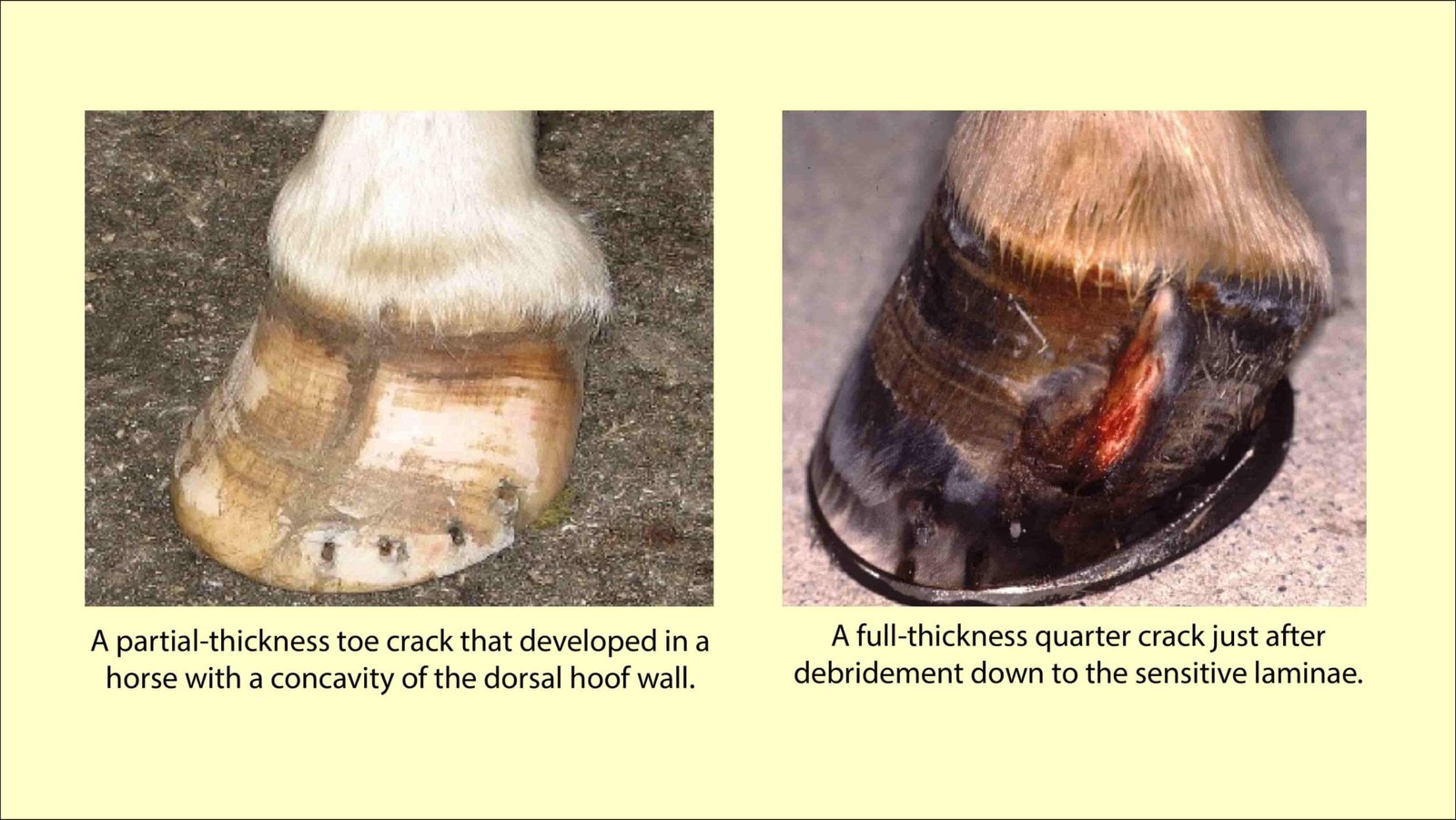TABLE OF CONTENTS
Sand Cracks in Horses
Sand Cracks in Horses are fissures in the wall of the hoof parallel to the horn tubules, extending from the coronet to the plantar border. It is usually met with in the toe region of the hind feet and the inner quarter of the fore feet.
Hoof wall cracks are generally described by their location (toe, quarter, heel, or bar), length (partial- or full-length), depth (superficial or deep), and the presence or absence of hemorrhage or infection. In most instances, the underlying wall damage is considerably more extensive than that noted from the exterior. These cracks may occur in the front or hind feet and may be superficial (only involve the hoof tissue) or deep (if the crack is full-thickness and involves the sensitive laminae beneath).

These cracks may begin at the bearing surface of the wall and extend variable distances up the hoof wall, or they may originate at the coronary band and extend distally. Quarter cracks and heel cracks are usually the most severe because they often involve the sensitive laminae. Affected horses are usually lame and haemorrhage after exercise may be noticed. Infection within the hoof crack is commonly observed.
Classification of Sand Cracks
- Complete sand crack, when the fissure is extending from the coronet to the plantar border
- Incomplete sand crack, when it extends only for a short distance
- Superficial, when the fissure involves only part of the thickness of the wall of the hoof
- Deep, when it involves the entire thickness of the wall
- Straight or sinus according to its course
- Recent or old, depending on duration
- Simple or complicated, depend on degree of damage to the sensitive tissues.
In complicated sand crack there is pus formation and the suppuration may separate on to surrounding tissues.
Etiology
- Hereditary predisposition
- Thinness of the wall
- Excessive rasping of the wall
- Alternate drying and moistening of the horn
- Injury to the coronet
- Violent extension
- Excessive growth of hoof wall and lack of periodical trimming
Clinical Signs
- The fissure can be easily detected after cleaning the hoof
- In complicated sand crack there may be effusion of blood, serum or pus.
- Lameness is due to pinching of sensitive laminae
- Spasmodic lifting of the limb during progression is seen because of pain
- No lameness is seen, if fissure is superficial
Treatment
Treatment for sand crack in horses consists of-
- Preventing the edges of the sand crack pinching on the sensitive laminae
- Promotion of new horn
- The treatment of complication, if any
Preventing the edges of the sand crack pinching on the sensitive laminae–
- Therapeutic shoeing
- Bandaging the hoof
- Application of clasps
- Transverse applications of horse shoe nail
- Thinning the horn at the edges
Promotion of new horn– A blister may be applied to the coronet region to stimulate the growth of new horn.
Treatment of complications, if any–
- Pus and necrotic tissue removed by thinning the horn and cleaning
- Antiseptic foot bath and foot dressing is applied